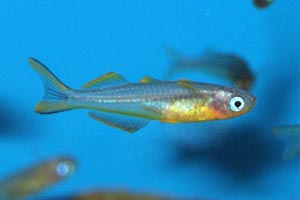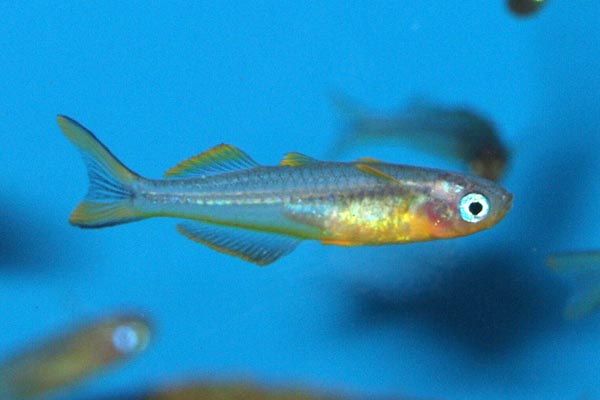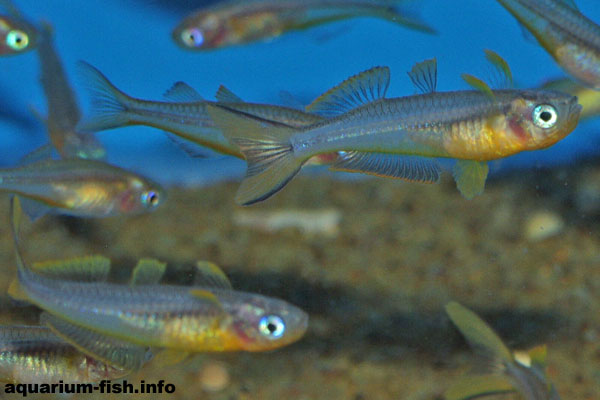

Species Profile | Images | Breeding Report | Similar Species

(Other members of the genus Pseudomugil)
ADULT SIZE: 6 cm
WATER CONDITIONS: Not critical
TEMPERATURE RANGE: 23-28 C
FOOD: Feed Pseudomugil furcatus small live-foods and fine grade dried foods
DISTRIBUTION: This species comes from New Guinea
SEXUAL DIFFERENCES: Male fish are more brightly coloured than females.
AQUARIUM CARE: Blue eye rainbows inhabit small freshwater streams with abundant aquatic vegetation and clear water. Males are more brightly coloured than females and elongated dorsal fin. Pseudomugil furcatus is an easy species for the aquarium, if given good conditions, open water for swimming and adequate planting. This species has also been known as Popondetta furcata and Popondichthys furcatus.
BREEDING: Easy to breed. Pseudomugil furcatus lays large eggs, just a few at a time, amongst plants, spawning mops or in the substrate. The fry hatch after 7-10 days, and should be raised separately. Regular feedings of newly hatched artemia nauplii will improve colouration of this fish.
Have you bred Pseudomugil furcatus? Why not fill in a breeding questionaire?, or examine existing Pseudomugil furcatus breeding reports
Other members of the genus Pseudomugil
Other rainbowfish species
Other species from New Guinea

Often referred to as the fork-tailed rainbowfish, or blue-eyed forktail

A shoal of Forktail rainbows displaying with their fins
BREEDING: Easy to breed. Pseudomugil furcatus lays large eggs, just a few at a time, amongst plants, spawning mops or in the substrate. The fry hatch after 7-10 days, and should be raised separately. Regular feedings of newly hatched artemia nauplii will improve colouration of this fish.
Have you bred Pseudomugil furcatus? Why not fill in a breeding questionaire?
Sorry no records.